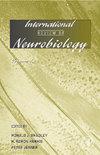肌张力障碍的生理学:人体研究。
3区 医学
Q2 Medicine
International review of neurobiology
Pub Date : 2023-01-01
Epub Date: 2023-05-26
DOI:10.1016/bs.irn.2023.05.007
引用次数: 0
摘要
在本章中,我们将讨论用于肌张力障碍研究的神经生理学技术。我们研究了抑制和过度可塑性等传统疾病模型,并回顾了这些模型在病理生理学中发挥因果作用的证据。然后,我们回顾了病理生理学中感觉和外周影响的证据,并审视了试图探究大脑振荡活动如何可能与肌张力障碍病理生理学相关联的新兴文献。本文章由计算机程序翻译,如有差异,请以英文原文为准。
Physiology of dystonia: Human studies.
In this chapter, we discuss neurophysiological techniques that have been used in the study of dystonia. We examine traditional disease models such as inhibition and excessive plasticity and review the evidence that these play a causal role in pathophysiology. We then review the evidence for sensory and peripheral influences within pathophysiology and look at an emergent literature that tries to probe how oscillatory brain activity may be linked to dystonia pathophysiology.
求助全文
通过发布文献求助,成功后即可免费获取论文全文。
去求助
来源期刊

International review of neurobiology
NEUROSCIENCES-
CiteScore
5.90
自引率
0.00%
发文量
75
审稿时长
>12 weeks
期刊介绍:
Published since 1959, International Review of Neurobiology is a well-established series appealing to neuroscientists, clinicians, psychologists, physiologists and pharmacologists. Led by an internationally renowned editorial board, this important serial publishes both eclectic volumes made up of timely reviews and thematic volumes that focus on recent progress in a specific area of neurobiology research.
 求助内容:
求助内容: 应助结果提醒方式:
应助结果提醒方式:


